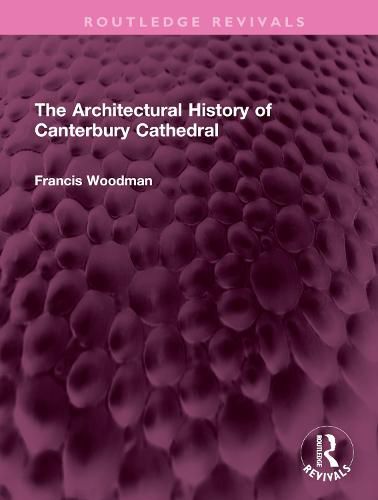Readings Newsletter
Become a Readings Member to make your shopping experience even easier.
Sign in or sign up for free!
You’re not far away from qualifying for FREE standard shipping within Australia
You’ve qualified for FREE standard shipping within Australia
The cart is loading…






First Published in 1981 The Architectural History of Canterbury Cathedral traces the entire architectural history of the church from Anglo-Saxon times to the present day. Every major epoch of English architecture is represented, from the Norman Conquest to the splendours of the Tudor age. One of the main concerns has been a reconstruction of the two Norman phases - Lanfranc’s cathedral from 1070 and the great choir of St Anselm begun in 1096. Dr Woodman puts forward new and provocative ideas about the architecture of William of Sens and his original proposals for the new Gothic choir and Trinity Chapel. The Perpendicular phases are detailed for the first time, including an important reattribution and redating of the splendid pulpitum. It analyses for the first time the precise areas of building completed by individual master masons, and he discusses details revealed by archaeological excavations and restoration work that are no longer visible.
This stimulating study is a must read for scholars and researchers of British architecture, architectural history and architecture in general.
$9.00 standard shipping within Australia
FREE standard shipping within Australia for orders over $100.00
Express & International shipping calculated at checkout
First Published in 1981 The Architectural History of Canterbury Cathedral traces the entire architectural history of the church from Anglo-Saxon times to the present day. Every major epoch of English architecture is represented, from the Norman Conquest to the splendours of the Tudor age. One of the main concerns has been a reconstruction of the two Norman phases - Lanfranc’s cathedral from 1070 and the great choir of St Anselm begun in 1096. Dr Woodman puts forward new and provocative ideas about the architecture of William of Sens and his original proposals for the new Gothic choir and Trinity Chapel. The Perpendicular phases are detailed for the first time, including an important reattribution and redating of the splendid pulpitum. It analyses for the first time the precise areas of building completed by individual master masons, and he discusses details revealed by archaeological excavations and restoration work that are no longer visible.
This stimulating study is a must read for scholars and researchers of British architecture, architectural history and architecture in general.